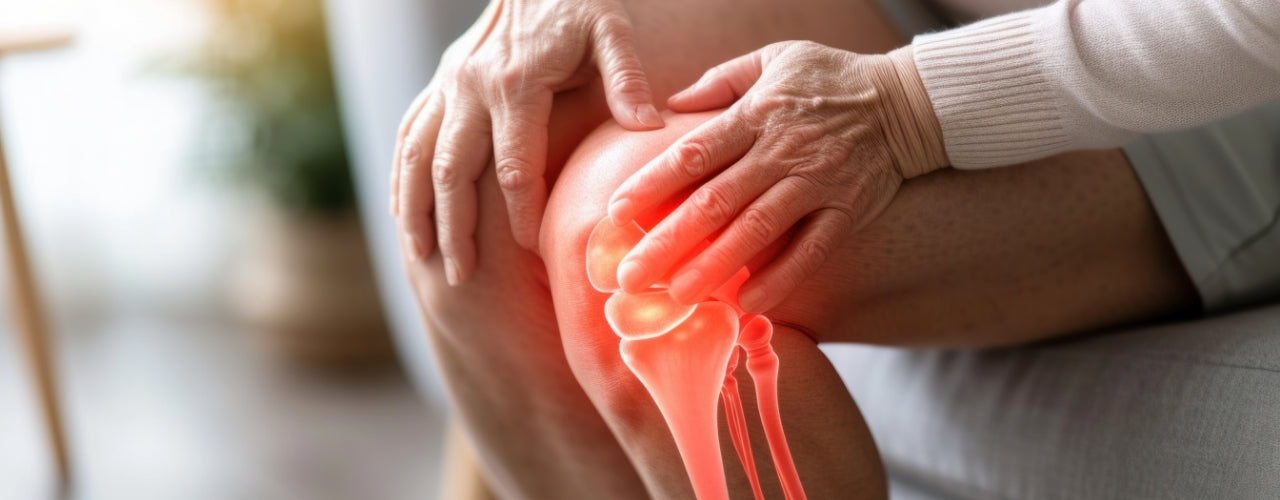
Understanding the Science Behind Knee Pain and Joint Inflammation
Knee pain and joint inflammation are common conditions that affect millions of people worldwide, especially those over 50. Understanding the underlying causes of these issues is essential to managing pain and improving joint health. From arthritis and cartilage degeneration to improper posture and injuries, the reasons behind knee pain are diverse but often interconnected.
In this article, we’ll dive deep into the science behind knee pain and joint inflammation, discussing their causes, symptoms, and ways to manage them. Whether you’re already experiencing discomfort or want to take preventive measures, this guide is tailored for you.
What Causes Knee Pain and Joint Inflammation?
The knee is a complex joint that bears the body’s weight and allows mobility. It consists of bones, cartilage, ligaments, tendons, and synovial fluid. When any of these components are compromised, knee pain or joint inflammation can occur.
1. Osteoarthritis
Osteoarthritis, often called "wear-and-tear" arthritis, is a leading cause of knee pain. Over time, cartilage that cushions the knee joint deteriorates, leading to stiffness, inflammation, and pain.
2. Rheumatoid Arthritis
Unlike osteoarthritis, rheumatoid arthritis (RA) is an autoimmune condition where the body’s immune system attacks the synovial membrane, causing swelling and severe joint pain.
3. Injuries
- Ligament tears like ACL injuries can cause acute pain and swelling.
- Meniscus tears occur when the cartilage in the knee joint is damaged, often during sudden twisting movements.
- Tendonitis results from overuse, leading to inflammation of the tendons.
4. Bursitis
Bursitis occurs when the fluid-filled sacs (bursae) around the knee become inflamed, often due to repetitive kneeling or overuse.
5. Gout and Pseudogout
These are forms of arthritis caused by crystal deposits in the joints, leading to sudden, severe knee pain and inflammation.
The Role of Inflammation in Joint Pain
Joint inflammation is the body’s natural response to injury, infection, or disease. While acute inflammation is beneficial for healing, chronic inflammation can damage tissues and lead to long-term pain.
Key signs of inflammation include:
- Swelling around the joint
- Redness and warmth
- Stiffness and limited range of motion
- Persistent pain
How to Manage and Prevent Knee Pain and Joint Inflammation
While knee pain can be debilitating, there are effective ways to manage and even prevent it.
1. Maintain a Healthy Weight
Excess weight places additional stress on the knees, accelerating cartilage wear and increasing the risk of osteoarthritis. Losing just 10 pounds can significantly reduce knee pain and improve mobility.
2. Stay Active
Low-impact exercises like walking, swimming, and cycling strengthen muscles around the knees without overloading the joints. Stronger muscles provide better support to the joints.
3. Practice Good Posture
Poor posture during standing, walking, or sitting can strain your knees and lead to pain. Maintain proper alignment to reduce stress on your joints.
4. Use Supportive Footwear
Shoes with good arch support and cushioning can reduce the impact on your knees and prevent misalignment.
5. Anti-Inflammatory Diet
Include foods rich in omega-3 fatty acids, antioxidants, and anti-inflammatory compounds. Examples include:
- Fatty fish (salmon, mackerel)
- Leafy greens (spinach, kale)
- Turmeric and ginger
- Nuts and seeds
6. Physical Therapy
A physical therapist can design a personalized program to improve knee strength and mobility, helping alleviate pain and prevent future issues.
7. Medications and Supplements
- Over-the-counter pain relievers like ibuprofen reduce inflammation.
- Supplements like glucosamine, chondroitin, and omega-3s support joint health.
When to See a Doctor
While mild knee pain can often be managed at home, consult a healthcare professional if you experience:
- Severe or persistent pain
- Swelling that doesn’t subside
- Difficulty bearing weight
- Signs of infection like fever or redness
Tips for Long-Term Joint Health
-
Stretch Daily
Incorporate stretching routines to improve flexibility and prevent stiffness. Focus on hamstrings, quadriceps, and calves. -
Invest in Knee Braces
Knee braces provide additional support during activities, reducing the risk of injury. -
Stay Hydrated
Proper hydration ensures the synovial fluid in your joints remains effective for lubrication. -
Quit Smoking
Smoking reduces blood flow to the joints, hindering repair and increasing the risk of arthritis.
Understanding the science behind knee pain and joint inflammation empowers you to take control of your joint health. By adopting preventive measures, staying active, and seeking timely medical advice, you can reduce pain and improve your quality of life. Remember, your knees are vital for mobility—taking care of them now can lead to a more active and pain-free future.

Leave a comment